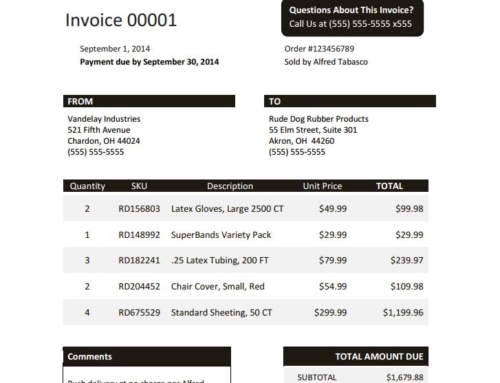Managing cash flow is one of the most important areas of a business. No matter how many sales you make, if you aren’t collecting on those accounts you simply won’t have any way to actually become profitable. In fact, 80 percent of businesses that fail attribute it to cash flow issues. Practicing cash flow management can help you to steer clear of business failure. So, what exactly should you be doing in cash flow management? Below, we highlight the do’s and don’ts of proper cash flow management.
THE DO’S
Whether you choose the first Wednesday of every month of every 15th of the month, there needs to be a set date chosen for when you will invoice customers. If a customer is never sure when they will receive that invoice, they will have no time to get funds in order. Your customers will appreciate having a reliable date to mark their calendars with a due date, and it will do wonders for your cash flow management too.
What’s the number one reason invoice disputes occur? Wrong information. This could mean that the cost is wrong or that the invoice didn’t contain a necessary purchase order. Once a customer disputes an invoice, you are already guaranteed to not collect on the full amount. If you’re double checking every invoice to ensure the correct information is provided, you can ensure you will be paid the amount you are owed.
Sometimes customers need a little guidance when it comes to paying their bills. Staying in constant communication with them will give them the extra push they need to get their payment in on time. Make sure to follow up every invoice with a phone call, emphasizing the payment terms and due dates.
With all of the available technology today, it simply doesn’t make sense to not use it for your advantage. Cash flow management software can automate most tasks for you in the accounts receivable process, from sending out invoices to including important documents and prioritizing communications with customers. Further, you can use cash flow management software to track your DSO, invoice dispute records and customer credit history, allowing you to make critical decisions on whether your cash flow management tactics need a refresher.
THE DON’TS
There is a method and formula for extending credit to the right customers, and deciding how much credit you can extend. Your business is not a bank, so you can’t go out and extend credit to any customer that asks. Investigate and ask for references. If you continue to make this mistake, you will find yourself with a lot of product sold but no cash flow to prove it.
Obviously, the cash that you have right now is extremely important. However, you should be focusing on how much cash you’re going to have in the future, as well. If you’re not projecting your future cash flow, you may make some bad spending choices that you won’t be able to support next month. It can also tell you how much you need to push collections to open up a larger cash flow.
You never know what could be around the corner. Not saving for a potential crisis in the future is asking for cash flow problems. Plan for a potential disaster and save up about 10 percent of your operating cash to only be touched when an unexpected issue arises.
The number one way to ensure that you’re collecting from your customers (one of your largest areas of cash flow), is sending out invoices on time. The longer it takes you to get an invoice to a customer, the longer it will take the customer to pay you. As soon as the service or product has been delivered, make sure the invoice has been sent. This gives customers more time to plan and get the money delivered on time.




